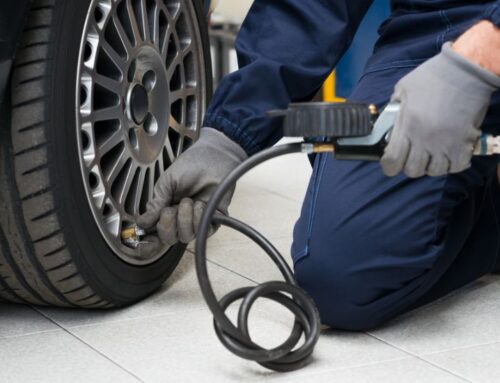For many automotive enthusiasts, upgrading their car’s audio system is just as important as modifying the engine or suspension. However, simply installing new speakers and a subwoofer doesn’t guarantee optimal performance. To truly get the best sound quality, it’s important to tune your car’s audio system. This involves adjusting various settings to optimize the sound and ensure that every note and beat is crystal clear. In this article, we’ll guide you through the process of tuning your car’s audio system to achieve the best possible sound.
Why tuning your car’s audio system is important
Have you ever installed a new audio system in your car, only to be disappointed with the sound quality? Even with high-quality components, improper tuning can prevent your audio system from reaching its full potential. Proper tuning can not only enhance the sound quality but also ensure the longevity of your audio components.
By adjusting settings such as equalizer, crossover, and gain, you can achieve optimal sound quality and protect your audio system from damage.
Understanding the components of your car’s audio system
This is crucial in order to properly tune it. Each component, including the head unit, amplifier, speakers, and subwoofer, plays a vital role in the overall sound quality. It’s important to know what each component does and how they work together to create the perfect audio experience. With this knowledge, you’ll be able to fine-tune each component to achieve optimal performance.
Also, are you tuning up a factory sound system or a custom audio system? Tuning a factory audio system may be more limited in terms of adjustments, but there are still ways to improve the sound quality. On the other hand, a custom audio system offers more flexibility in terms of tuning options.
No matter what type of audio system you have, it’s important to start with a clean slate. Make sure all the settings on your audio system are reset to default. This ensures that you’re starting from a baseline and not making adjustments on top of existing settings.


A step-by-step guide to tuning your car’s stereo system
- Start with the basics
Before diving deep into tuning, ensure that your audio system is properly installed and wired. Check for any loose connections or damages to the wiring. Make sure that your amplifier is providing adequate power to your speakers and subwoofer. - Adjust the equalizer
An equalizer is an essential tool for shaping the sound of your audio system. It allows you to boost or cut specific frequency ranges to achieve the desired sound. Begin by setting all the equalizer bands to their neutral setting. Play a song that you’re familiar with and adjust each band to find the perfect balance. Keep in mind that boosting one band too much can result in distortion. - Set the crossover
The crossover is responsible for directing specific frequencies to the right speakers and subwoofers. The aim is to ensure that each component is handling the frequencies that it’s designed to handle. Start by setting the crossover points according to your speaker and subwoofer specifications. Play a song with a variety of music genres and listen to how the different frequencies are distributed. Adjust the crossover points until each component is handling the frequencies that it’s designed to handle. - Adjust the gain
The gain is the volume control for your amplifier. It’s important to set the gain correctly to prevent damage to your audio components. Begin by setting the gain low and gradually increasing it while playing a song. When you notice distortion, back off until the distortion disappears. This ensures that your audio components are receiving the right amount of power without being overdriven. - Fine-tune the settings
Once you’ve gone through the basic adjustments, it’s time to fine-tune the settings. Play different types of music and adjust the settings until you achieve the best possible sound quality. Don’t be afraid to experiment and try different settings to find what sounds best to you.
Making adjustments based on your preferences
Depending on your music preferences, you may want to adjust your audio system to enhance certain aspects of the sound. For example, if you listen to a lot of bass-heavy music, you may want to boost the low frequencies. On the other hand, if you prefer a more balanced sound, you may want to cut the low frequencies and boost the mids and highs. Remember, tuning your car’s audio system is a personal preference, and what sounds good to someone else may not necessarily sound good to you.
Tuning your car’s audio system is an art form that requires patience and attention to detail. By starting with the basics, adjusting the equalizer, setting the crossover, adjusting the gain, and fine-tuning the settings, you can achieve the best possible sound quality from your audio system. Experiment with different settings and trust your ears to find what sounds best to you. With a little effort, you can transform your car’s audio system into a high-performance sound machine that you can enjoy for years to come.
What types of tools do I need to tune my car’s audio system?
As an automotive enthusiast, you understand the importance of having a high-quality audio system in your car. The right tools can make all the difference when it comes to achieving the perfect sound quality. Here are some essential tools you’ll need to tune your car’s audio system:
Multimeter – A multimeter is an essential tool for measuring voltage, current, and resistance. When tuning your car’s audio system, you’ll need to test the voltage of your car’s battery and alternator to make sure they’re functioning correctly.
Oscilloscope – An oscilloscope is a tool that allows you to measure and analyze electrical signals. It can be used to test the audio signal coming from your car’s head unit, amplifiers, and speakers.
Signal generator – A signal generator is a device that produces an audio signal. It can be used to test the frequency response of your car’s audio system, helping to identify any problems with the sound quality.
RTA (Real-Time Analyzer) – An RTA is a tool that analyzes sound waves in real-time. It can be used to measure the frequency response of your car’s audio system, helping you to identify any peaks or dips in the sound.
SPL meter – A sound pressure level (SPL) meter is a tool that measures the loudness of sound. It can be used to measure the volume level of your car’s audio system, helping you to ensure that the sound is not too loud or too quiet.
While some of these tools may seem intimidating, they are essential for achieving optimal performance from your car’s audio system. However, even with these tools, it’s important to trust your ears and experiment with different settings to find what sounds best to you.
Remember, tuning your car’s audio system is a personal experience, and what sounds good to one person may not sound good to another. With a little effort and attention to detail, you can transform your car’s audio system into a high-performance sound machine that you can enjoy every time you hit the road.
Do You Need a Professional?
For our readers in South Florida, you can count on Miami Power Wheels for all your car audio and customization needs. If you’re not confident in your ability to tune your car’s audio system or simply don’t have the time or patience and better yet want to upgrade your equipment, professional help is available.
We carry a wide inventory of head units, amplifiers, front speakers, subwoofers, receivers, and more, all from top brands in the industry. Our team of experienced technicians can help you select the right equipment for your car and install it to ensure optimal performance.
In addition to audio systems, we offer a range of customization services, including car wraps, suspension upgrades, and LED lighting. Whether you’re looking to give your car a sleek new look or enhance its performance and audio capabilities, we have you covered.
Contact us today to learn more about our services and schedule a consultation with one of our experts.
Remember, investing in a high-quality audio system is an investment in your driving experience, and it’s worth taking the time to get it right.






